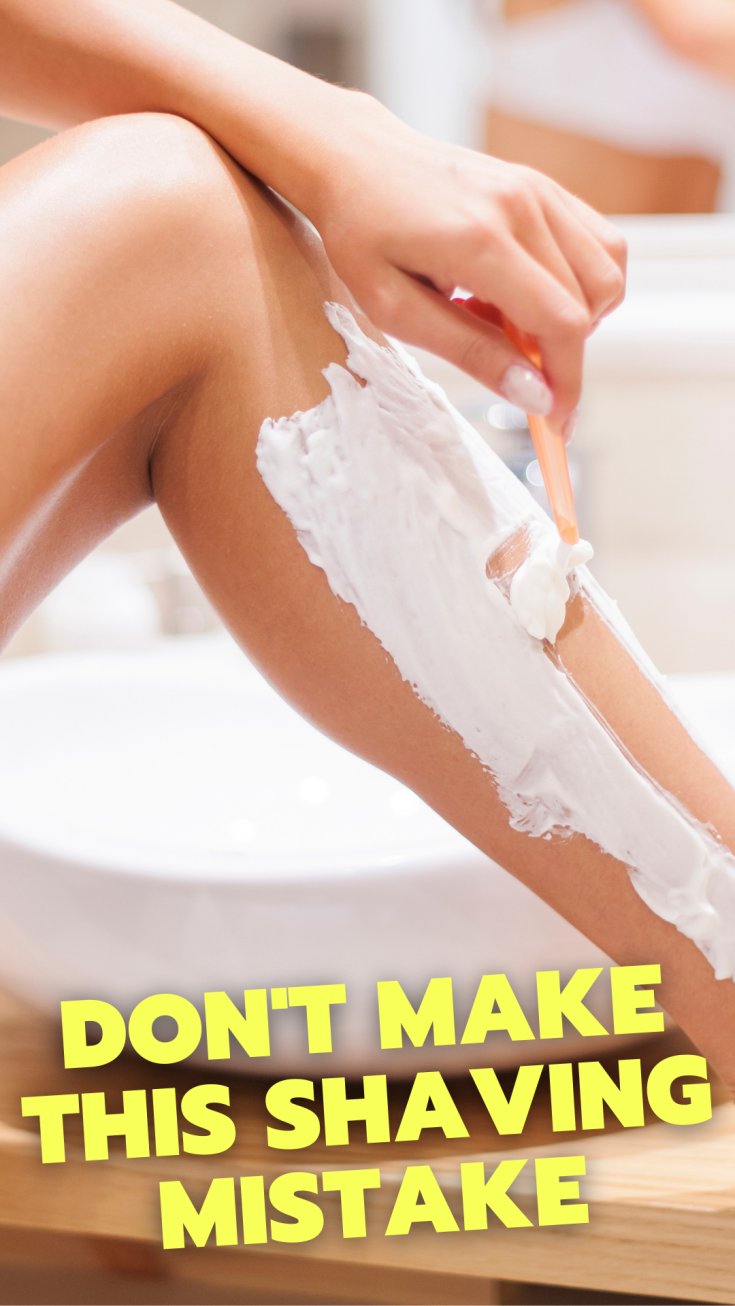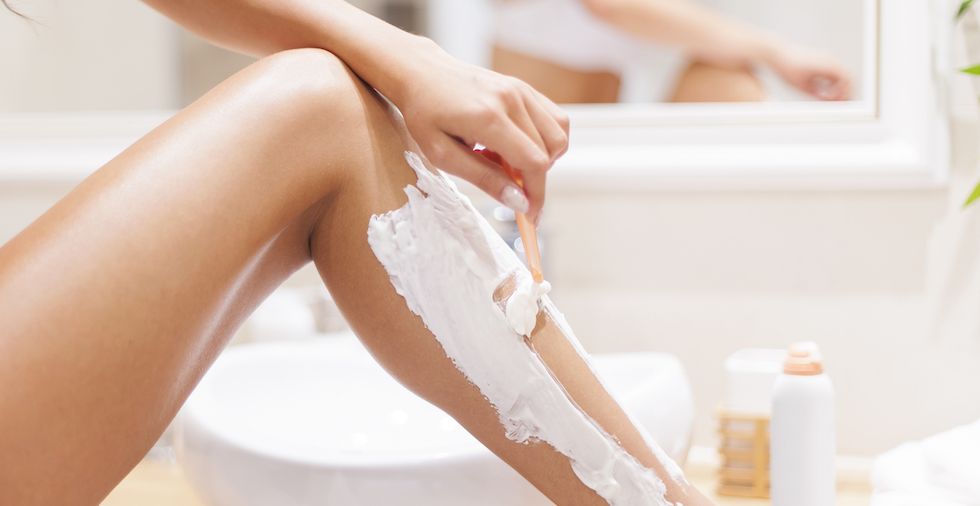- Why is exfoliating important when shaving?
- Do you exfoliate before or after shaving?
- How to exfoliate when you're shaving
- What are the risks of over-exfoliation?
Skincare can be an absolute minefield. When you’re new to the realms of looking after your skin and shaving, you might worry about getting it wrong. Chances are, nobody ever sat you down and explained how it's done.
Before you reach forward and grab your handy razor, many questions spring to mind. Do you exfoliate before or after shaving? How often should you exfoliate? And can you damage your skin if you get it all wrong? Those are valid conundrums and, luckily enough, you don’t have to face them alone. Read our quick explanatory guide here.
Why is Exfoliating Important When Shaving?
First things first, let’s talk about why you need to exfoliate when you’re shaving. The truth of the matter is that there are a few different reasons this is important. First, taking this extra step means getting rid of any dirt, grime, or dead skin cells. Then, when you’re ready to start shaving, it leaves you with a blank canvas. However, it doesn’t end there.
This step helps to lift the hairs from the skin quickly and easily. That means that when it comes time to shave, you will find it more straightforward than it would otherwise be. In addition, you should find that shaving is smooth and that there’s no resistance whatsoever. For that reason, getting into the habit of exfoliating when you’re shaving is always a good move.
Did you know facial exfoliation is a little different and has a bunch of benefits, too? Read our guide!
Do You Exfoliate Before or After Shaving?
The short answer is both. You can exfoliate both before and after shaving. However, if you need to pick just one, you should exfoliate first and then shave afterwards. Ensuring that you do this will mean that your skin is clean and ready for you to shave with utter ease. In addition, as we have already mentioned, exfoliating helps to get rid of any dirt and gently pushes your hairs upward. The American Academy of Dermatology recommends shaving when skin is "free of excess oil and dead skin cells that can clog up your razor blade". All of the above means that you will find it easier to get a clean shave.
Note: Some experts say that you shouldn’t exfoliate after shaving as it could irritate the skin. Everyone is different. Figure out what regime works for you and your skin type.
Of course, you want to avoid falling into the trap of over-exfoliating your skin. The consensus is that you should exfoliate ‘normal’ skin between two and three times a week. You can exfoliate more often for oily skin—perhaps every other day. However, if you happen to have dry or sensitive skin, you may want to reduce this a bit. It will be a case of trial and error. Should you start to notice that you have dry, irritated, or itchy skin when you’re shaving or exfoliating, contact a dermatologist for more information.
How to Exfoliate When You’re Shaving
Now that you know when to exfoliate let’s take a quick look at how to do it. You may already have an exfoliating regimen that works for you. If that’s the case, crack on. However, if like many of us, you don’t have a clue where to begin, we’ve got you covered. Here’s a quick tutorial to help you get this skincare task right.
Step 1: Choose your exfoliating product
Before you get started, you’re going to need to choose your exfoliating products. There are plenty of options out there. Keep in mind that many of these contain microbeads, which are bad for the environment. It may be worth opting for more natural products with that in mind. For example, you may want to select an exfoliation that uses ground-up seeds or other ingredients to give you the results you’re looking for. Keep your eyes out for them or try making a DIY body scrub.
For inspiration, take a look at these uses for sugar, the beauty benefits of coconut oil, and Epsom salt uses.
Have you got sensitive skin? If you’re planning on exfoliating a sensitive part of your body, you might want to get a specific product that fits the bill. Fortunately enough, there are plenty of exfoliators that are specifically designed not to damage your skin when it’s sensitive.
Step 2: Use product and warm water
When you’re exfoliating your skin, you need to use a little of the product you choose (see step one!) and warm water for top results. The reason is simple. The warm water will help gently open your pores to cleanse them with the product. Simply start by putting a little of the product on your fingertips and running some warm water too.
Step 3: Use circular motions
The next step is where you get going. Place your fingers on the skin that you want to exfoliate. Move them in circular motions as gently as you need. With many products, you will find that this motion causes the cream to froth up. Avoid going too hard or fast as this can damage the skin for no good reason. Instead, keep things soft and slow from the start.
Step 4: Rinse with warm water
Are you all done? Good! The final step of the exfoliation process is rinsing. Again you want to use warm water for this part of it. You should use your hands to splash warm water on the area. Of course, if you’re exfoliating in the shower or bath, you can use the water there. Top tip: Be sure to be gentle with the area you’re exfoliating.
What are the Risks of Over-Exfoliation?
Worried that you exfoliate your skin too much? Taking care of your skin well is a no-brainer. Whatever your shaving routine is, you need to make sure that you look out for some actual red flags. Check out some of the risks of over-exfoliation:
- Itchiness
- Dryness
- Peeling
- Ingrown hairs
- Rashes
- Razor bumps
- Razor burn
- Tight skin
- Infections
Whenever you experience any of the above, it means that you may want to slow down with your exfoliating routine. Should you damage your skin or make it extra dry, it can lead to an infection. That’s because the skin may crack and be open to bacteria and germs. Keep in mind that it’s always better to be safe than sorry when it comes to skincare.
Ready to get started? There are plenty of ways to make sure that you look after your skin. But, of course, since nobody wants to deal with razor burn or rashes, you need to stay ahead of the game. But, now that you’ve got the inside scoop, nothing should be holding you back.
Next, why not read about our favourite natural hair removal methods or our winter skincare tips?
Q&A
Got some burning questions that you cannot wait to ask? We’ve got your back. Here are some of the frequently asked questions about shaving and exfoliating.
Do you exfoliate before or after cleansing?
Ideally, you should exfoliate after you have cleansed your face. That way, your skin will be clean and ready for you to get started. When you exfoliate, you get deep into your pores and remove any excess there. Cleansing only cleans the top layer of your skin. Using a two-step technique means gaining a thorough and deep clean. Neat.
How do you exfoliate your legs?
Now sure how to exfoliate your legs? It doesn’t have to be complicated. Wash your legs first when you are in the bath and shower. Then use a body scrub, sugar scrub, or exfoliator to exfoliate them. The skin is tougher than other areas of your body. So you can rinse them and then shave them when you have finished exfoliating them.
What are the dangers of exfoliating?
You shouldn’t be exfoliating your skin too much, as we have covered. Doing so could lead to many problems, including dry skin, itchiness, infection, and more. When treating your skin, be sure to be as gentle as possible at all times.
Pro tip: Exfoliating shouldn’t hurt or irritate you… if it does, you’re doing it too hard!
Is it OK to exfoliate daily?
Probably not! Experts suggest that you should exfoliate around two or three times a week. If you are exfoliating daily, you risk causing some severe damage to your skin. Take things nice and slow. Work out a skincare routine that suits you.
Can over-exfoliating cause inflammation?
Yes! When you exfoliate too regularly, it makes the skin weak. That in itself can make it vulnerable to things like inflammation and even infection. With that in mind, you should always be careful and gentle when exfoliating. If you’re unsure where to get started, speak to a dermatologist. Doing so will help you understand how to get it right from the offset.
Now that you know the proper way to shave, enjoy your silky smooth skin! Leave a comment below if you have any questions.


After shaving I always end up with ingrown hairs on my legs even after I have exfoliated etc. Have you any tips on preventing those pesky hairs and what to do to get them out without leaving my legs full of healing scratches where I have tried to remove them .
To prevent ingrown hairs, prepare your skin before shaving, use a sharp razor, shave in the direction of hair growth, and treat ingrown hairs gently with warm compresses and salicylic acid treatments.